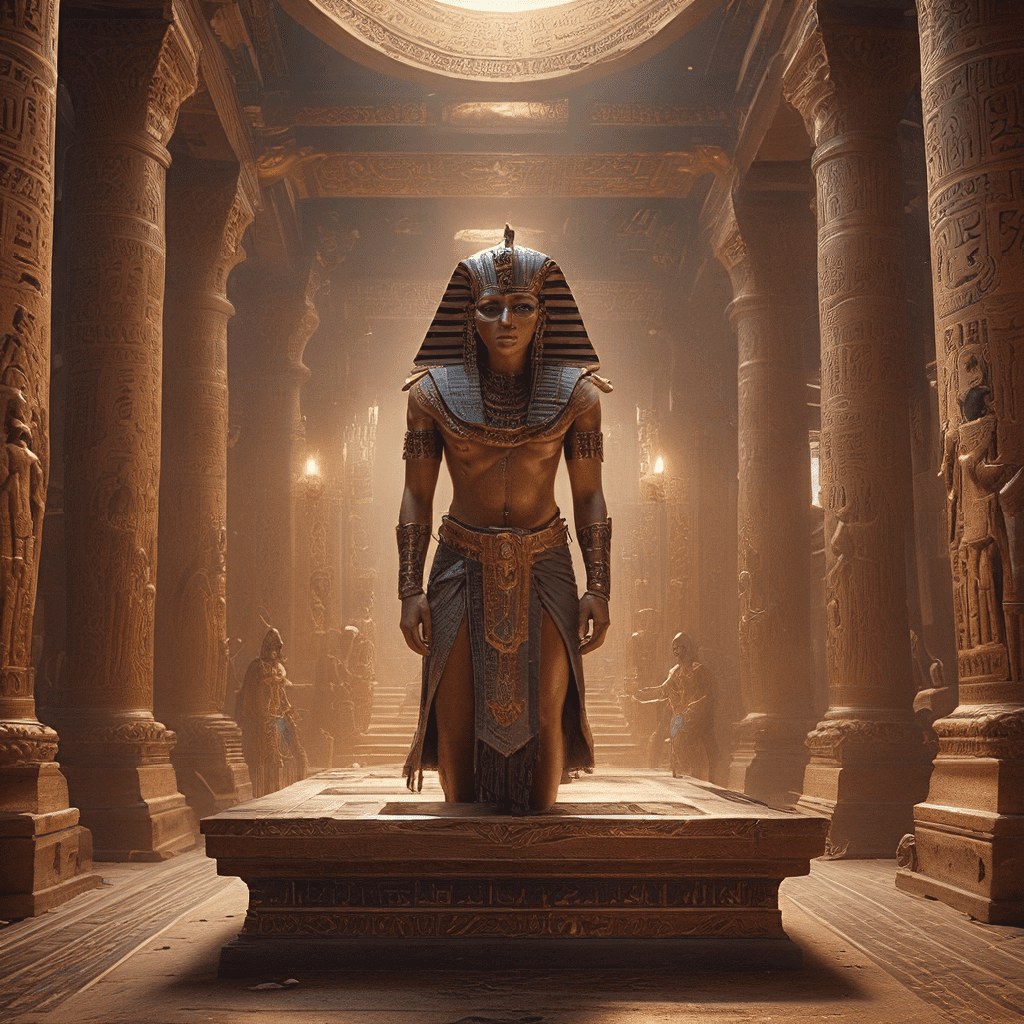The Hidden Meaning of Egyptian Rituals
Ancient Egypt’s rich history is intertwined with a complex system of rituals, steeped in symbolism and mythology. Understanding these rituals, beyond their outward appearances, unlocks a hidden world of beliefs and practices that shaped the lives of the Egyptians.
The Importance of Rituals in Ancient Egypt
Rituals were the lifeblood of ancient Egyptian society, connecting every aspect of life, from daily routines to the grand celebrations of the Pharaoh. These rituals provided a framework for understanding their place in the universe, as well as their relationship to the divine.
Egyptians believed that maintaining cosmic order, called “Ma’at,” was crucial for the well-being of humanity and the universe. Rituals were a way to ensure this order was preserved. From the elaborate ceremonies of the Pharaohs to the daily offerings made to the gods, these practices reinforced the Egyptians’ understanding of their place in the world.
Rituals also played a crucial role in social control. They reinforced societal norms and expectations, emphasizing the importance of obedience, respect for authority, and community cohesiveness. The elaborate rituals surrounding the Pharaoh, for example, reinforced his divine right to rule and the importance of respecting his authority.
The Journey of the Soul
The Egyptians held a complex view of the soul, believing it to be composed of different parts. The “Ba,” often depicted as a human-headed bird, represented the personality and essence of an individual. The “Ka,” symbolized by two arms raised in adoration, embodied the life force and vital energy.
Mummification, the intricate process of preserving the body after death, was deeply symbolic. It was seen as a vital step in ensuring the soul’s safe passage to the afterlife. The act of preserving the body symbolized the preservation of the “Ka,” ensuring the continuity of life after death.
The “Book of the Dead,” a collection of spells and hymns, provided guidance for the deceased’s journey through the underworld. It contained instructions on how to navigate the trials and challenges of the afterlife and ultimately gain access to eternal life in the presence of Osiris, the god of the underworld.
The Role of the Pharaoh
The Pharaoh was more than just a ruler; he was considered a divine king, a descendant of the gods, and a living embodiment of Horus, the god of kingship. The Pharaoh’s responsibility extended beyond earthly matters; he was tasked with maintaining cosmic order, ensuring the well-being of the universe, and mediating between the gods and humanity.
The Pharaoh’s reign was marked by numerous rituals that reinforced his divine status. The Sed Festival, for example, was a major celebration held every 30 years of the Pharaoh’s reign to renew his power and ensure the continuation of his rule. These rituals helped solidify the Pharaoh’s authority and maintained stability within the kingdom.
The Significance of Symbols
Ancient Egyptian symbols held profound meaning and significance, representing abstract concepts, beliefs, and deities. These symbols were woven into the fabric of daily life, appearing in art, architecture, and rituals.
The Eye of Horus, often depicted as a stylized eye, was a powerful symbol representing protection, power, and royal authority. The Ankh, a loop topped with a cross, was linked to life, immortality, and the breath of life. The Scarab beetle, known for its rolling of dung balls, became strongly associated with rebirth and renewal, symbolizing the cycle of life and death.
The Myth of Osiris
The myth of Osiris, the god of the underworld, is a central narrative in Egyptian mythology and directly relates to the concept of death and resurrection. The story tells of Osiris, who was murdered by his brother Seth and resurrected by his wife Isis. Osiris’s death and resurrection symbolize the cycle of life, death, and rebirth, a key belief in ancient Egypt.
The Sed Festival, a ritual celebrated during the Pharaoh’s reign, was directly linked to the Osiris myth. This festival was believed to renew the Pharaoh’s power and ensure his continued rule, reflecting the cycle of death and resurrection embodied by Osiris.
The Cult of the Dead
The Egyptians held deep respect for the dead and believed it was crucial to honor them and ensure their safe passage to the afterlife. The elaborate development of tomb architecture was a testament to this belief.
Tombs were meticulously planned and constructed, filled with symbolic imagery and offerings. Pyramids, a symbol of power and eternity, were built as grand tombs for Pharaohs. Smaller tombs, decorated with intricate paintings and hieroglyphs, were created for people of all social classes. The Egyptians believed that these tombs would serve as a “house of eternity” for the deceased where their “Ka” could reside.
Offering rituals, performed within the tombs, played a crucial role in ensuring the deceased’s well-being in the afterlife. These rituals involved providing sustenance, such as food, drink, and clothing, and making offerings to the gods to guide the deceased through the underworld.
The Role of Gods and Goddesses
The Egyptian pantheon included a diverse array of gods and goddesses, each representing specific aspects of life, nature, and the cosmos. These deities were deeply connected to the lives of the Egyptians and were central to their religious practices.
Ra, the sun god, was the creator god. He played a crucial role in the daily cycle of life and death, bringing light and warmth to the world. Osiris, the god of the underworld, was tasked with judging the souls of the deceased and ensuring their safe passage to the afterlife. Isis, goddess of motherhood and magic, was the embodiment of feminine power and protection.
Rituals were an integral part of honoring these gods and goddesses. Temples dedicated to specific deities served as focal points for worship, where priests conducted elaborate ceremonies, offerings were made, and prayers were recited. These rituals helped the Egyptians maintain a connection to the divine and ensure the favor of the gods.




